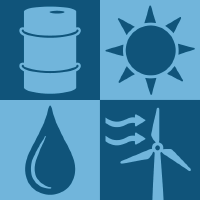Topic Editors



Advances in Solar Heating and Cooling

Topic Information
Dear Colleagues,
Global energy consumption for air-conditioning, both heating and cooling, is increasing rapidly. An estimated 111 million AC units were sold this year, for new installations and the replacement of waste equipment, and more than 918 million AC units are currently installed in buildings around the world. Conventional AC units typically have a high electricity consumption and use non-environmentally friendly refrigerants. In this context, the know-how capitalised in OECD countries (Europe, US, Australia, etc.) in solar heating and cooling (thermal and PV) is already significant. However, very few efforts have been made to adapt and transfer this know-how to those countries characterized by different operating conditions and markets (Africa, MENA, and Asian countries, which are all dynamic, emerging economies).
Therefore, the present Topic, entitled “Advances in Solar Heating and Cooling”, calls for papers to be a showcase of ideas, research progresses, and innovations for affordable, safe and environmentally friendly heating and cooling systems, based on solar energy, either thermal or PV, for those regions worldwide with favourable climates and growing economies.
Topics of interest include, but are not limited to, the following:
- Improvements in sorption technologies for heating and cooling;
- Adapted components for solar-assisted heating and cooling systems;
- Adapted system for solar heating and cooling in harsh operating conditions;
- Exergy analysis for solar heating and cooling systems;
- Accurate dynamic simulation of solar heating and cooling systems in harsh climates;
- New materials for adsorption chillers;
- Hybrid chillers for PV/thermal solar heating and cooling systems;
- Retrofit of solar cooling systems in buildings for increased efficiency;
- Passive solar cooling systems;
- Passive solar heating systems;
- Ground-assisted solar heating and cooling systems;
- Improvements in solar energy harvesting for air-conditioning purposes;
- Modelling of solar-assisted AC systems for warm climate;
- New trends in sustainable heating and cooling.
Dr. Salvatore Vasta
Prof. Dr. Sotirios Karellas
Dr. Marina Bonomolo
Dr. Alessio Sapienza
Prof. Dr. Uli Jakob
Topic Editors
Keywords
- solar cooling
- solar heating
- solar air-conditioning
- solar AC
- PV cooling
- photovoltaic cooling
- PV heating
- photovoltaic heating
- heat pumps
- efficiency in buildings
- exergy analysis
- sunbelt regions
- harsh summer conditions
- hot climates
- building efficiency
- adsorption
- absorption
- thermally driven chiller
- sorption chiller
- solar-assisted chillers
- solar-assisted heat pumps
- severe summer conditions...
Participating Journals
| Journal Name | Impact Factor | CiteScore | Launched Year | First Decision (median) | APC | |
|---|---|---|---|---|---|---|

Buildings
|
3.8 | 3.1 | 2011 | 14.6 Days | CHF 2600 | Submit |

Energies
|
3.2 | 5.5 | 2008 | 16.1 Days | CHF 2600 | Submit |

Entropy
|
2.7 | 4.7 | 1999 | 20.8 Days | CHF 2600 | Submit |

Resources
|
3.3 | 7.7 | 2012 | 23.8 Days | CHF 1600 | Submit |

Sustainability
|
3.9 | 5.8 | 2009 | 18.8 Days | CHF 2400 | Submit |

MDPI Topics is cooperating with Preprints.org and has built a direct connection between MDPI journals and Preprints.org. Authors are encouraged to enjoy the benefits by posting a preprint at Preprints.org prior to publication:
- Immediately share your ideas ahead of publication and establish your research priority;
- Protect your idea from being stolen with this time-stamped preprint article;
- Enhance the exposure and impact of your research;
- Receive feedback from your peers in advance;
- Have it indexed in Web of Science (Preprint Citation Index), Google Scholar, Crossref, SHARE, PrePubMed, Scilit and Europe PMC.



